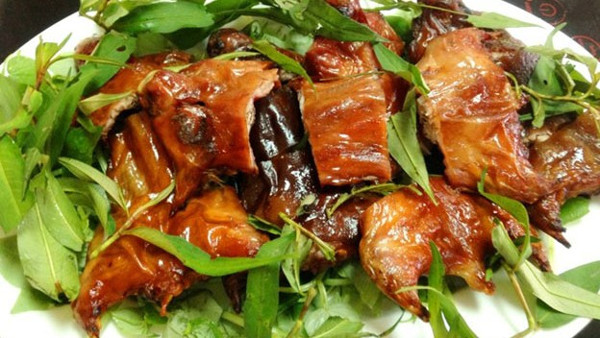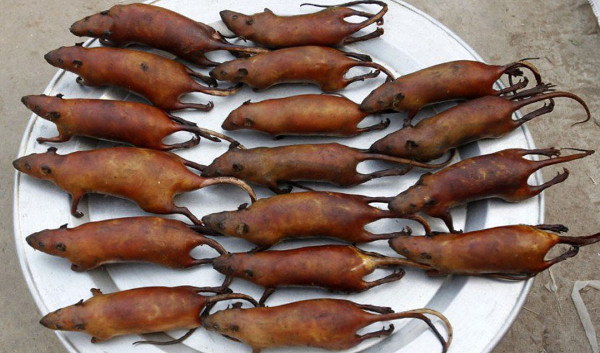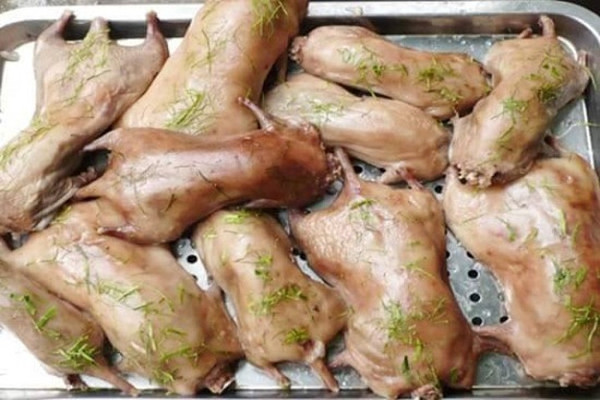Eat healthy mouse meat, is it good?
In many places, rat meat is a popular specialty. Meanwhile, many people believe that rats are filthy animals that pose a risk to health. So, is it good to eat rats and mice?
- Delicious cockroach milk and 4 times the milk cow's milk, but are you ready to enjoy it?
- Does eating cold rice warm up to be dangerous to health?
- 12 food quality testing tips to avoid poisoning
- Mistakes to avoid when cooking
Nutritional value of rat meat
Not only in Vietnam but also in many parts of the world, people also put their mouse on the list of attractive dishes.

Mouse meat - a specialty of many regions.
In fact, rats are edible animals. Even rat meat is rich in nutrients, not inferior to the types of chicken, pig, and beef that we often use in meals.
Currently, people only eat hamsters, the type of rats that mainly eat natural foods such as rice, cassava, corn, crab, snails .
In hamster meat contains 23.6% protid, 0.1% carbon hydrate, 1% lipid, 242% mg phosphorus, 30mg% canci and other important vitamins.
Hamster meat is sweet, warm and non-toxic, so in eastern medicine hamster is also considered a precious medicine.

Worry about food safety
Although benign and highly nutritious, there are many cases after eating this specialty for severe abdominal pain, vomiting, diarrhea . requiring emergency hospitalization. The cause is poisoning: one is eating the wrong rat meat, the other is eating an unhealthy rat.
Currently, because hamsters have become increasingly scarce, many people because of profiteering have caught rats - the type that crawls in sewers, eats a lot of bacteria and toxic substances, for sale to consumers.

In addition, it is possible that the hamster was stuck with the baits, was drunk or died when caught but the seller did not leave. Besides, the mouse itself can carry some pathogens that we cannot know, of which the most dangerous is the plague.
Bubonic plague is not spread through the meat-eating route but can be transmitted when prepared if there are open wounds on the skin. This is an infectious disease that can be transmitted directly through the respiratory tract, so if a person becomes ill, it will easily become a major epidemic.
Therefore, consumers should not eat if it is not sure if it is healthy ham. Wear a mask and wear gloves during processing to prevent germs. Limit eating out of goods because it is difficult to ensure the origin and quality of hamster meat
You should read it
- Interesting facts about mice you may not know
- Top meat grinder for family best buy now
- Top most popular meat grinder with price of less than 1 million today
- Notes when using frozen meat
- Lab-grown meat built on soy scaffold tastes and smells just like beef
- How to make delicious meat stock ship
- The secret behind the piece of meat for 15 years is still sold for 73 million, booking a year to enjoy
- Artificial beef has blood, smell, taste like real meat
May be interested
- Experts point out the exact number of meat, fish, vegetables ... need to eat every day to keep the body healthy
 how much is an adult need to eat? the expert will turn on the correct amount of food so you can be assured and apply it in the daily menu.
how much is an adult need to eat? the expert will turn on the correct amount of food so you can be assured and apply it in the daily menu. - Artificial beef has blood, smell, taste like real meat
 unlike artificial meat made in 2013, artificial beef derived from new plant proteins created by scientists this time is full of blood, smell and taste like real meat.
unlike artificial meat made in 2013, artificial beef derived from new plant proteins created by scientists this time is full of blood, smell and taste like real meat. - This site will help you master the technique of using the mouse to the point of 'superiority' to treat all types of games
 but with this interesting website, you can test how well your mouse is using, and evaluate whether the mouse is good or not, without having to turn on the game. .
but with this interesting website, you can test how well your mouse is using, and evaluate whether the mouse is good or not, without having to turn on the game. . - Where to buy good computer mouse, cheap?
 the mouse is an indispensable part of the computer users. so which company is the best buy computer mouse? buy a computer mouse where good, cheap?
the mouse is an indispensable part of the computer users. so which company is the best buy computer mouse? buy a computer mouse where good, cheap? - Instructions for making delicious garlic fried meat
 spiced fried meat is not a strange dish and too difficult to make for many people. and in this article you will have a new recipe for garlic fried meat to make the dish more delicious.
spiced fried meat is not a strange dish and too difficult to make for many people. and in this article you will have a new recipe for garlic fried meat to make the dish more delicious. - 8 things to know when buying a computer mouse
 replacing new mice can help you work better and play games more comfortably, plus it can help prevent damage to your wrists and fingers.
replacing new mice can help you work better and play games more comfortably, plus it can help prevent damage to your wrists and fingers. - How to fix mouse lag in Windows 11/10
 at times, you may notice that your mouse pointer is laggy. while the reasons for mouse lag can vary, problematic or outdated cursor drivers are the most common causes for this problem.
at times, you may notice that your mouse pointer is laggy. while the reasons for mouse lag can vary, problematic or outdated cursor drivers are the most common causes for this problem. - Invite the game to go to the exciting Super Meat Boy for $ 14.99, which is free
 super meat boy is an interesting game developed and designed from the meat boy game by two developers, mcmilen and jonathan mcentee.
super meat boy is an interesting game developed and designed from the meat boy game by two developers, mcmilen and jonathan mcentee. - 10 very good foods for the liver that you should not ignore
 please join us to refer to 10 extremely good foods for the liver that you should not ignore in the article below!
please join us to refer to 10 extremely good foods for the liver that you should not ignore in the article below! - Top 9 best cheap gaming mice 2019
 a great gaming mouse will add strength to your powerful gaming rig. although you can spend a lot of money on the most advanced computer mouse, there's really no need to waste that. there are many good cheap gaming mouse options on the market.
a great gaming mouse will add strength to your powerful gaming rig. although you can spend a lot of money on the most advanced computer mouse, there's really no need to waste that. there are many good cheap gaming mouse options on the market.










 Which health bracelet should I choose: Fitbit Flex 2 or Fitbit Charge 2?
Which health bracelet should I choose: Fitbit Flex 2 or Fitbit Charge 2? Surprise with 5 benefits when using HRM-M10 heart rate meter in practice
Surprise with 5 benefits when using HRM-M10 heart rate meter in practice 10 ways of eye muscle training and vision enhancement are not to be missed
10 ways of eye muscle training and vision enhancement are not to be missed Characteristic signs of flu in infants and adults
Characteristic signs of flu in infants and adults Wearing shoes without wearing socks contains more dangerous consequences than you think
Wearing shoes without wearing socks contains more dangerous consequences than you think The video shows how to work with a single bar
The video shows how to work with a single bar